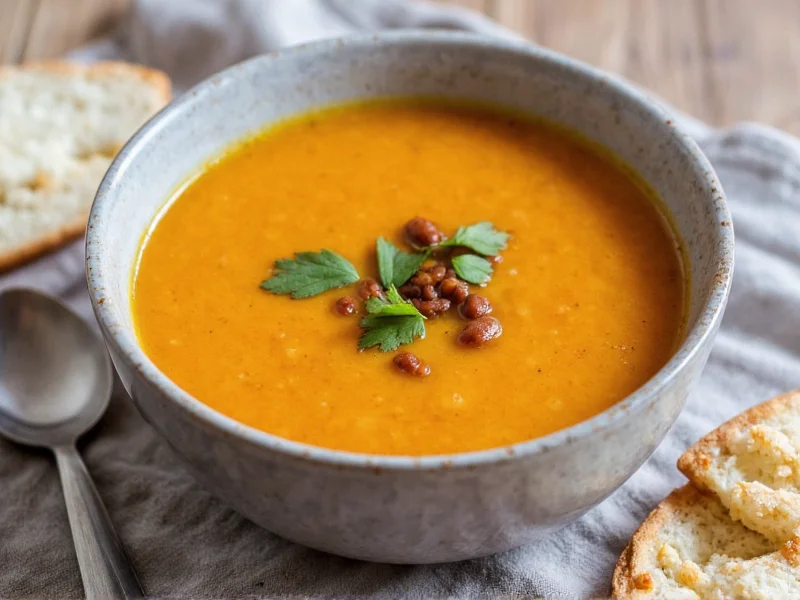Choosing the right soup bowl significantly impacts your dining experience, from temperature maintenance to portion control. Understanding the technical specifications and material properties helps you select vessels that complement both your culinary preferences and table settings.
Essential Soup Bowl Characteristics
When evaluating soupware, three critical factors determine functionality: dimensions, shape, and construction material. Professional chefs and tableware experts agree that optimal soup bowls balance practicality with aesthetic appeal.
Dimensions That Matter
Standard soup bowls range from 8-10 inches across with depths between 2-3 inches. This proportion creates the perfect ratio of surface area to volume, preventing rapid cooling while allowing comfortable spoon access. Smaller portions (8-10 oz) suit appetizer servings, while 12-16 oz capacities accommodate heartier main course soups. Japanese ramen bowls often exceed 10 inches with depths approaching 4 inches to accommodate noodles and broth.
Shape Considerations
The curvature of your soup vessel affects both heat retention and eating experience. Traditional European soup plates feature shallow, wide designs ideal for consommés, while deeper, tapered bowls maintain temperature for chowders and bisques. Modern ergonomic designs incorporate subtle ledges that prevent spoon slippage and reduce spills. Handles provide crucial functionality for hot preparations, with oval-shaped handles offering superior grip comfort compared to traditional loop designs.
| Material | Heat Retention | Durability | Maintenance | Best For |
|---|---|---|---|---|
| Stoneware | Excellent | High | Dishwasher safe | Everyday use, rustic settings |
| Ceramic | Very Good | Moderate | Hand wash recommended | Formal dining, artisanal pieces |
| Porcelain | Good | Low-Moderate | Hand wash preferred | Elegant presentations, special occasions |
| Tempered Glass | Fair | High | Dishwasher safe | Cold soups, modern aesthetics |
Selecting Based on Soup Type
Different soups demand specialized vessels. Clear broths perform best in wide, shallow soup plates that showcase ingredients while allowing steam to escape. Cream-based soups require deeper bowls with excellent heat retention properties to maintain optimal serving temperature. Noodle soups necessitate extra depth (minimum 3 inches) to accommodate long ingredients without spillage.
Professional kitchen tests reveal that stoneware maintains soup temperature approximately 25% longer than porcelain counterparts. This difference becomes particularly noticeable during multi-course meals where soups serve as first courses. For households with children, bowls featuring non-slip silicone bases significantly reduce accidental spills.
Practical Usage Tips
Pre-warming bowls with hot water before serving extends soup temperature retention by up to 15 minutes. Avoid sudden temperature changes with ceramic and porcelain pieces to prevent cracking. When stacking for storage, place felt pads between bowls to prevent micro-chipping that compromises structural integrity over time.
Consider your microwave usage patterns when selecting materials. While most stoneware and ceramic options are microwave-safe, some decorative finishes contain metallic elements that create hazardous sparking. Always check manufacturer specifications for heat tolerance limits, especially if planning to use bowls for soup preparation rather than just serving.
Avoiding Common Selection Mistakes
Many consumers overlook interior glaze quality, which directly impacts flavor preservation. High-quality glazes create non-porous surfaces that prevent soup ingredients from absorbing into the material. Avoid bowls with visible pinholes in the glaze, as these harbor bacteria and cause staining.
Don't confuse soup bowls with cereal bowls - the latter typically feature wider openings and shallower depths unsuitable for liquid retention. Restaurant industry standards maintain a minimum 2.5-inch depth for proper soup service, a specification often ignored in mass-market dinnerware collections.
Specialized Soup Bowl Applications
Japanese donburi bowls serve dual purposes for rice-based soup dishes, featuring extra width for ingredient arrangement. French onion soup requires specialized crocks capable of withstanding broiler temperatures for cheese melting. For travel or outdoor use, insulated stainless steel options maintain temperature for extended periods while preventing breakage.
Consider your dishwasher's interior dimensions when selecting oversized soup bowls. Many artisanal pieces exceed standard rack spacing, forcing hand washing that diminishes long-term convenience. The most versatile home options measure between 8.5-9.5 inches in diameter with 2.5-inch depths - accommodating most soup varieties while fitting standard dishwashers.
Frequently Asked Questions
What is the standard capacity for a soup bowl?
Standard soup bowls typically hold 12-16 ounces (350-475 ml) of liquid. Appetizer portions use 8-10 ounce bowls, while hearty meal portions require 16-20 ounce capacities. The ideal measurement provides enough space for ingredients without creating excessive surface area that accelerates cooling.
Are ceramic soup bowls better than porcelain?
Ceramic offers superior heat retention and durability for everyday use, making it ideal for regular soup service. Porcelain provides a finer, more elegant appearance suitable for formal occasions but is more prone to chipping. Both materials are non-reactive with acidic soups when properly glazed, though ceramic maintains temperature approximately 20% longer than porcelain.
How deep should a soup bowl be for optimal functionality?
The optimal depth ranges from 2-3 inches (5-7.5 cm). Shallower bowls (1.5-2 inches) work for clear broths, while deeper vessels (2.5-3.5 inches) accommodate chunky soups and noodle dishes. Professional tableware designers recommend a depth-to-diameter ratio of 1:3 for balanced functionality - for example, a 9-inch bowl should be approximately 3 inches deep.
Can soup bowls go in the microwave and dishwasher?
Most stoneware and ceramic soup bowls are both microwave and dishwasher safe, provided they lack metallic decorations. Always verify manufacturer specifications, as some handcrafted pieces may have temperature limitations. Porcelain generally withstands dishwashing well but often requires hand washing to preserve delicate finishes. Avoid sudden temperature changes with any ceramic-based materials to prevent cracking.











 浙公网安备
33010002000092号
浙公网安备
33010002000092号 浙B2-20120091-4
浙B2-20120091-4